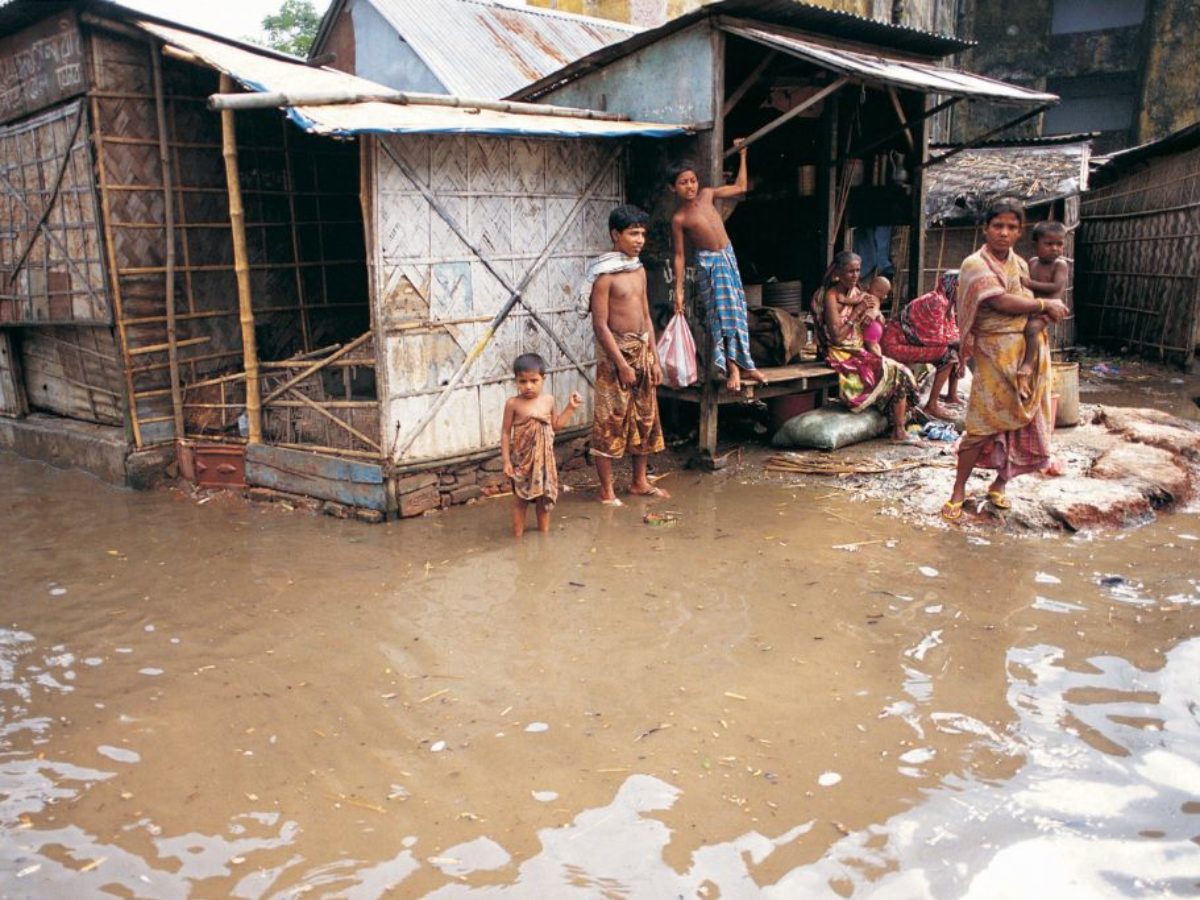
Rising Sea Levels and Storm Surges: A Looming Threat to Children’s Safety
Subtitle: International Impact of Climate Change on the Future Generation
Introduction :
The rising sea levels and increasing frequency of storm surges due to climate change has emerged as a significant threat, particularly for the vulnerable population of children worldwide. With this international article, we aim to shed light on the potential consequences of these environmental changes on the safety and well-being of children. Exploring the effects of rising sea levels on coastal regions and the intensified risks during extreme weather events, this article underscores the urgent need for global attention, action, and collaboration to protect our youngest generation.
Section 1: Understanding the ImpactRising sea levels and storm surges are among the most severe impacts of climate change on coastal regions worldwide. These phenomena are expected to become more frequent and severe as global temperatures continue to rise, threatening the safety and livelihoods of millions of people who live in coastal regions. Among them, children are particularly vulnerable, and their safety and well-being are at increased risk due to their limited capacity to cope and protect themselves.
1.1 Explaining Rising Sea Levels
Rising sea levels are a result of two primary factors – the melting of ice caps and glaciers and the thermal expansion of seawater. As global temperatures rise, the Earth’s polar ice caps and glaciers are melting rapidly, adding more water to the oceans. This, combined with the thermal expansion of seawater, is causing the average global sea level to rise.
The effects of rising sea levels are increasingly apparent in low-lying coastal regions worldwide, where populations are more vulnerable to flooding, erosion, and loss of essential resources. Coastal regions support some of the most densely populated areas in the world, containing significant industrial, agricultural, and commercial infrastructure that is essential to the global economy. Children living in these regions are vulnerable to coastal flooding and displacement, which can lead to interrupted education, a lack of access to healthcare services, and long-term psychological trauma.
1.2 Explaining Storm Surges
A storm surge is a temporary and abnormal increase in seawater level during severe weather events, such as hurricanes, typhoons, and cyclones. Storm surge occurs due to a combination of factors, including strong winds, low atmospheric pressure, and the movement of the storm itself. As the storm approaches the coast, the wind pushes seawater towards the land, leading to an increase in sea level.
The impact of storm surges on coastal populations can be catastrophic. The sudden, unforeseen increase in water levels can lead to extensive flooding, destruction of infrastructure, loss of homes, and tragic fatalities. Children are particularly at risk during these events as the physical and psychological impact can have a long-lasting effect, interrupting the growth and development of children.
Section 2: Physical Safety Concerns The physical safety concerns associated with rising sea levels and storm surges pose a serious threat to children living in coastal regions. These environmental changes increase the risk of flooding, displacement, injury, and even death for children in these areas.
2.1 Increased Risk of Flooding
Rising sea levels directly contribute to an increased risk of coastal flooding. As the sea level rises, even minor storm events can result in significant inundation of coastal communities. This puts children living in these areas at great risk, as they may not have the physical strength or knowledge to navigate through deep water or escape to higher ground. Additionally, floodwaters often carry debris, hazardous materials, and pollutants, making them even more dangerous for children’s safety.
2.2 Displacement and Loss of Homes
Coastal communities that experience frequent flooding due to rising sea levels and storm surges often face the threat of displacement and loss of homes. Families, including children, may be forced to evacuate their homes and seek refuge in temporary shelters, overcrowded facilities, or unfamiliar environments. Displacement can disrupt children’s lives, leading to disruptions in education, social support networks, and access to essential services like healthcare. The trauma associated with losing one’s home and community can have long-lasting effects on children’s well-being.
2.3 Risk of Injury and Death
During storm surges, the powerful force of the water, along with strong winds and flying debris, can lead to severe injuries and even death. Children are particularly vulnerable to these hazards as their smaller size and limited physical strength make it more challenging for them to withstand the forces of nature. Falling trees, collapsing buildings, and flying objects pose a significant risk to children’s safety during extreme weather events, emphasizing the need for proactive measures to protect them.
2.4 Impact on Healthcare Services
Rising sea levels and storm surges can significantly affect the availability and accessibility of healthcare services for children in coastal regions. Disrupted infrastructure, damaged healthcare facilities, and overwhelmed medical personnel create challenges in delivering timely medical care to those in need. In emergencies, such as during a severe storm surge, access to medical services and supplies may be limited, putting the lives of children at an even greater risk. It is essential to develop robust healthcare systems that can continue to function effectively even under the most challenging circumstances.
2.5 Psychological Trauma
In addition to the physical risks, children living in coastal regions affected by rising sea levels and storm surges can also experience significant psychological trauma. Displacement, loss of familiar surroundings, exposure to dangerous situations, and the fear of future events can lead to anxiety, depression, post-traumatic stress disorder (PTSD), and other mental health issues among children. The long-term emotional impact of these experiences can have severe consequences for their overall well-being and development.

Conclusion:
The physical safety concerns associated with rising sea levels and storm surges for children living in coastal regions are a pressing issue that requires immediate attention. It is crucial to implement proactive measures to protect children from the risks of flooding, displacement, injury, and psychological trauma. Governments, international organizations, and local communities must work together to develop and implement robust strategies that ensure the safety and well-being of the youngest and most vulnerable population in the face of climate change. Only through global attention, action, and collaboration can we protect our future generation from the looming threat of rising sea levels and storm surges.
Section 3: Psychological and Emotional Effects,In addition to the physical safety concerns associated with rising sea levels and storm surges, there are also significant psychological and emotional effects on children living in coastal regions. The trauma of experiencing extreme weather events, the displacement of homes and communities, and the fear of future environmental instability have a profound impact on the mental health and emotional wellbeing of children.
3.1 Anxiety and Stress
As sea levels rise and storms become more frequent and intense, many children living in coastal regions experience a constant state of anxiety and stress. The threat of flooding, displacement, and loss of homes and belongings can lead to persistent worry and fear, which can have long-term effects on mental health. Children may become hypervigilant and struggle to feel safe, leading to ongoing feelings of anxiety.
3.2 Depression
Disruption to their daily life and a sense of loss due to extreme weather events, flooding or displacement can contribute to feelings of sadness and despair in children. Protracted displacement from homes and communities can result in depression, potentially leading to isolation, hopelessness, and a strain on their mental health.

3.3 Post-Traumatic Stress Disorder (PTSD)
Children exposed to extreme weather events and displacement can also develop PTSD, a severe, long-lasting mental health disorder. The trauma of such events may cause flashbacks, nightmares, and intrusive thoughts, leading to ongoing distress, potentially manifesting as PTSD is a significant consequence of the prolonged impact of disaster and displacement.
3.4 Fear of Future Events
As climate change intensifies, there is an increased likelihood of more frequent and severe weather events, leading to a fear of future instability and uncertainty. Children living in coastal regions may fear how the environmental changes will impact their lives and communities. This fear creates a persistent stressor that affects children’s well-being for prolonged periods of time.
3.5 Social Disruption
Extreme weather events and displacement can result in significant social disruptions. Children may be disconnected from their support networks, friends, and familiar environments, causing considerable distress. A lack of access to education can also contribute to feelings of disorientation, affecting children’s sense of stability and safety.
Conclusion:
The psychological and emotional effects of rising sea levels and storm surges underscore the urgent need for global attention, action, and collaboration to protect children’s physical and mental well-being. As the effects of climate change intensify, it is important to prioritize the mental health of children. This requires supporting local communities and healthcare providers in developing and implementing strategies to address psychological concerns. It also necessitates working to create policy solutions that prioritize the wellbeing of children in the context of global climate change. Through these efforts, we can help protect the youngest and most vulnerable populations from the severe and lasting impacts of rising sea levels and storm surges.
Section 4: Mobilizing Global ResponseSection, Climate change and its impact on rising sea levels and storm surges are global issues that require a global response. The threats to children’s safety and well-being posed by these environmental changes are grave, and urgent action is necessary to mitigate and prevent further harm. Mobilizing a global response is a challenging task, but it is necessary to protect our future generation. In this section, we explore the ways in which we can mobilize a global response to address the impacts of rising sea levels and storm surges on children.
4.1 Awareness and Education
Raising awareness and educating people about the impacts that climate change has on children’s safety and well-being is an essential first step. Governments, NGOs, and international organizations can work together to communicate the urgency of the issue and the need for immediate action. Through advocating for climate change education and incorporating this content into school curriculums, we can cultivate an environmentally conscious next generation.
4.2 Sustainable Development
Sustainable development initiatives are instrumental in mitigating the effects of climate change on vulnerable populations, including children. By investing resources in sustainable infrastructure, coastal communities can build resilience for future extreme weather events and reduce greenhouse gas emissions. Promoting sustainable transportation, recycling initiatives, and energy conservation can also help protect our planet and reduce the risks of environmental crises.
4.3 Disaster Response Plans
Developing disaster response plans for communities at risk of rising sea levels and storm surges can help mitigate the impact of natural disasters on children. Governments and other stakeholders can work together to establish emergency evacuation procedures, providing resources and support for effective and quick evacuation. Additionally, establishing early warning systems to provide children with time to prepare, as well as providing mental health services to children affected by such disasters, is key in ensuring their safety and well-being.
4.4 International Cooperation
As rising sea levels and storm surges are global issues, international cooperation is crucial in addressing these challenges. Encouraging countries to join forces, share knowledge, and resources will strengthen the efforts to mitigate climate change’s impact on coastal regions. Multilateral partnerships can also help ensure equitable distribution of resources, as well as promote action on climate change in countries at high risk of disasters and environmental changes.
4.5 Green Financing
Green financing initiatives can encourage the financing of environmental sustainability projects, including those aimed at mitigating the impact of rising sea levels and storm surges. This initiative seeks to raise a new level of sustainable investment and ensure funding opportunities for initiatives that promote climate change mitigation and adaptation.
Conclusion:
Rising sea levels and storm surges pose significant threats to children’s safety and well-being globally. Achieving a global response to these environmental changes requires advocating for awareness, education, sustainable development, disaster response plans, international cooperation, and green financing initiatives. As we work towards mitigating these global challenges, governments, NGOs, and international organizations must work in collaboration to protect our planet and future generations. With concerted efforts, we can address the impact of rising sea levels and storm surges on children and ensure that we leave a better planet for generations to come.
Section 5: Empowering Children for Resilience,In the face of looming threats from climate change, empowering children with the knowledge and skills to adapt and build resilience is critical. The impact of rising sea levels and storm surges affects children the most, and they must be prepared to face these challenges. In this section, we explore how children can be empowered to build resilience and adapt to the impact of climate change.
5.1 Education and Awareness
Education and awareness form crucial parts of empowering children. Children must be educated on environmental and climate change issues, including the causes and consequences of rising sea levels and storm surges. Engaging children in learning and contributing to solutions to problems related to climate change will enable them to become environmentally conscious citizens.
5.2 Developing Resilience Skills
Developing resilience skills can support children in overcoming adversity. Children must be taught to cope and manage stressful situations, develop problem-solving skills, critical thinking and decision-making. Additionally, life skills such as emotional coping, communication, and conflict resolution can offer them the necessary skillsets to handle the challenges posed by climate change. Strategies such as mindfulness, deep breathing, and self-reflection can also support children in developing resilience.
5.3 Encouraging Participatory Activities
Encouraging participatory activities brings children’s voices to the forefront and ensures that their needs and desires are considered in decision-making processes. Through such activities, children can learn the importance of community involvement and work towards nature conservation and environmental protection. Examples of participatory activities include recycling initiatives, energy conservation projects, creating gardens, and coastal clean-ups.
5.4 Safe Space Creation
Creating safe spaces provides a platform for children to express their feelings and concerns without fear of judgment or repercussions. In the context of rising sea levels and storm surges, safe spaces can help children deal with the stress and anxiety associated with the dangers they face. Providing them with access to counseling and mental health services is also essential in ensuring that they cope with challenging situations.
5.5 Encouraging Active Citizenship
Encouraging active citizenship empowers children to become agents of change in their communities and beyond. Children can be involved in decision-making processes at the local, national, and international levels, supporting policy formulation and driving advocacy campaigns related to the environment and the impacts of climate change.
Conclusion:
Empowering children with the knowledge, skills, and abilities to build resilience to the impacts of climate change and rising sea levels is key in ensuring their safety and well-being. Through education, developing resilience skills, encouraging participatory activities, creating safe spaces, and encouraging active citizenship, children can become agents of change and advocates for the environment. Building resilience in children is critical for the sustainable development of our planet and ensuring that future generations can adapt and thrive in the face of global environmental challenges.
All Categories
- Agricultural Methods
- Agriculture and Women Small Farmers Rights Awareness
- Climate Change
- Disable and Human Rights
- Disable Jobs
- Donation
- Education
- Health Issues
- Organic Foods
- Organic Vegetables
- Orphans Children
- Plastic production and disposal
- Services
- Sinking in Scarcity
- Success Stories
- Uncategorized
- Waste Management
- Women Rights
- Youth Empowerment




